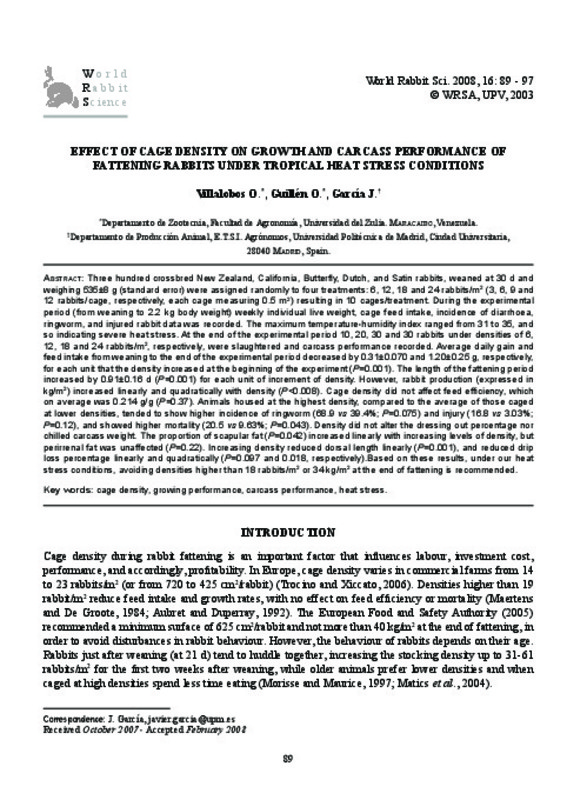JavaScript is disabled for your browser. Some features of this site may not work without it.
Buscar en RiuNet
Listar
Mi cuenta
Estadísticas
Ayuda RiuNet
Admin. UPV
Effect of cage density on growth and carcass performance of fattening rabbits under tropical heat stress conditions
Mostrar el registro completo del ítem
Villalobos, O.; Guillén, O.; García J., J. (2010). Effect of cage density on growth and carcass performance of fattening rabbits under tropical heat stress conditions. World Rabbit Science. 16(2). https://doi.org/10.4995/wrs.2008.631
Por favor, use este identificador para citar o enlazar este ítem: http://hdl.handle.net/10251/8519
Ficheros en el ítem
Metadatos del ítem
| Título: | Effect of cage density on growth and carcass performance of fattening rabbits under tropical heat stress conditions | |
| Autor: | Villalobos, O. Guillén, O. García J., J. | |
| Fecha difusión: |
|
|
| Resumen: |
[EN] Three hundred crossbred New Zealand, California, Butterfl y, Dutch, and Satin rabbits, weaned at 30 d and weighing 535±8 g (standard error) were assigned randomly to four treatments: 6, 12, 18 and 24 rabbits/m2 (3, ...[+]
|
|
| Palabras clave: |
|
|
| Derechos de uso: | Reserva de todos los derechos | |
| Fuente: |
|
|
| DOI: |
|
|
| Editorial: |
|
|
| Versión del editor: | https://doi.org/10.4995/wrs.2008.631 | |
| Tipo: |
|








